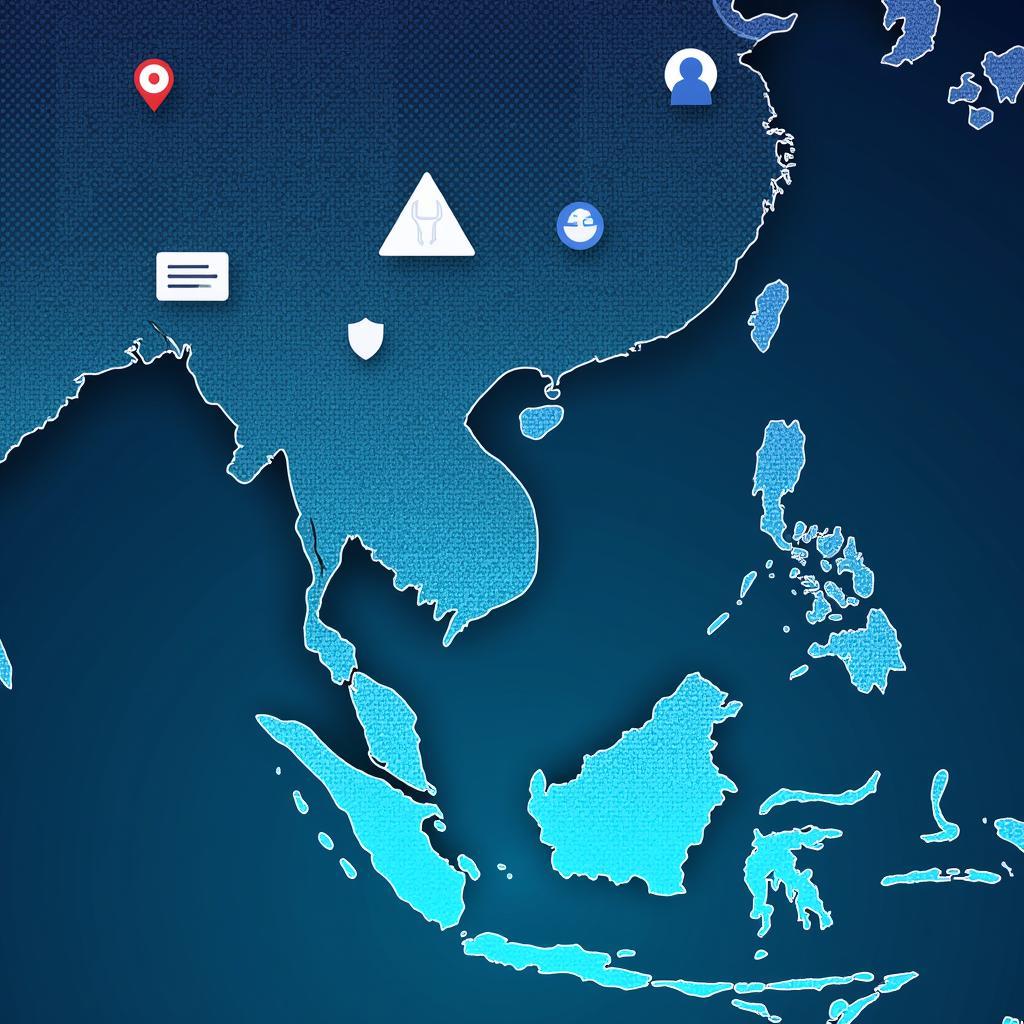The Asean Acronym is frequently encountered in today’s interconnected world, especially within geopolitical and economic discussions. But what exactly does ASEAN stand for, and why is it significant? This comprehensive article delves into the meaning, history, and importance of the ASEAN acronym, shedding light on its role in fostering regional cooperation and integration in Southeast Asia.
ASEAN Acronym Explained: Unveiling the Full Name
ASEAN stands for the Association of Southeast Asian Nations. This regional intergovernmental organization comprises ten Southeast Asian countries: Brunei Darussalam, Cambodia, Indonesia, Laos, Malaysia, Myanmar, the Philippines, Singapore, Thailand, and Vietnam.
A Historical Glimpse: The Genesis of ASEAN
The ASEAN acronym emerged in 1967 when five Southeast Asian nations – Indonesia, Malaysia, the Philippines, Singapore, and Thailand – signed the ASEAN Declaration (also known as the Bangkok Declaration). This pivotal moment marked the official establishment of ASEAN, driven by a shared desire to promote peace, stability, and economic growth in the region.
Pillars of Cooperation: ASEAN’s Objectives and Principles
At its core, ASEAN aims to accelerate economic growth, social progress, and cultural development among its member states. The organization also strives to promote regional peace and stability by upholding the principles of peaceful coexistence and mutual respect.
ASEAN’s Impact: Transforming Southeast Asia
Since its inception, ASEAN has played a crucial role in transforming Southeast Asia into a region of relative peace and economic dynamism. Through various initiatives and agreements, ASEAN has successfully:
- Enhanced trade and economic cooperation: ASEAN has established a free trade area (AFTA) among member states, significantly boosting intra-regional trade and investment.
- Promoted political and security cooperation: ASEAN provides a platform for dialogue and cooperation on political and security issues, fostering trust and confidence among member states.
- Advanced social and cultural cooperation: ASEAN encourages collaboration in areas such as education, culture, and health, fostering a sense of shared identity and regional solidarity.
ASEAN’s Global Significance: A Rising Force
Today, ASEAN has emerged as a significant player on the global stage. With a combined GDP exceeding US$3 trillion, ASEAN represents the world’s fifth-largest economy. The organization’s growing economic clout, coupled with its strategic location, has led to increased engagement from major powers worldwide.
Conclusion: ASEAN’s Enduring Relevance
The ASEAN acronym, representing the Association of Southeast Asian Nations, signifies a remarkable journey of regional cooperation and integration. From its humble beginnings, ASEAN has evolved into a dynamic organization, playing a vital role in promoting peace, stability, and prosperity in Southeast Asia and beyond. As ASEAN continues to navigate the complexities of the 21st century, its commitment to collaboration and dialogue will remain crucial in shaping a brighter future for the region and its people.


